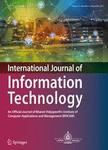版权所有:内蒙古大学图书馆 技术提供:维普资讯• 智图
内蒙古自治区呼和浩特市赛罕区大学西街235号 邮编: 010021

作者机构:Department of Computer Science Government College of Engineering & Textile Technology Calcutta Serampore India Department of Information Technology Government College of Engineering & Textile Technology Calcutta Serampore India Department of Mathematics Kuwait American School of Education Hawalli Salmiya Kuwait Department of Computer Science Bengal College of Engineering and Technology Calcutta Durgapur India
出 版 物:《International Journal of Information Technology (Singapore)》 (Int. J. Inf. Technol.)
年 卷 期:2025年
页 面:1-8页
主 题:Deep learning Kolmogorov Arnold network Multi-layered perceptron Road accidents
摘 要:Road accidents are one of the major contributors to mortality in India with nearly 1.68 lakh deaths in 2023 accounting for nearly 19 deaths per hour. While road accidents aren’t always “fatal, delayed detection leads to the loss of many lives. Deep Learning deliberately showed terrific results for a lot of tasks, but for a long time, the Deep Learning models utilized the standard Multi-Layered Perceptron (MLP) architecture as its’ skeleton. Recently, a state-of-the-art architecture—Kolmogorov Arnold Network (KAN) showed up, with variable activation functions in each edge of the graphical representation of the network. Several works have inherited the KAN architecture and have shown better results in many instances. This research proposes a class of accident detection models, SADAK (Simple, and Automatic Detection of Accidents on roads using Kolmogorov–Arnold Networks) for detection of road accidents inheriting KAN architecture. To benchmark its efficiency, several well-known MLP based architectures have been considered, alongside some state-of-the-art models, which result in accuracies as high as 89% using the MLP (Vision Transformer), and 97% using the KAN architecture (KAN-Convolutional-MLP). © Bharati Vidyapeeth s Institute of Computer Applications and Management 2024.